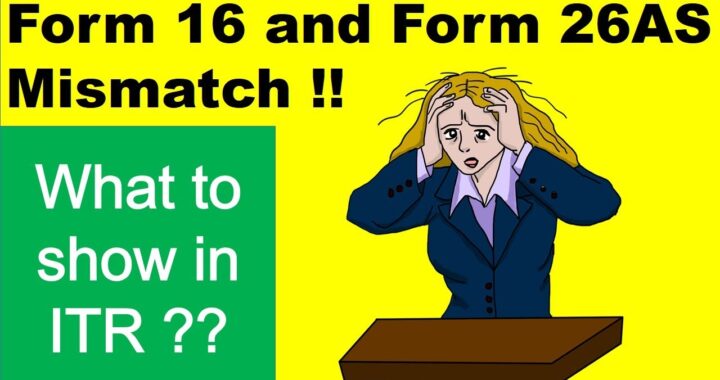Accounting Standards
Accounting Standards

| AS. No. | Accounting Standard | Effective Date | Mandatory | Objective |
| 1 [1] | Disclosure of Accounting Policies | 1.4.1991 | Mandatory | This statement deals with the disclosures of significant accounting policies followed in preparing and presenting financial statements. The purpose of this standard is to promote better understanding of financial statements by establishing the disclosure of significant accounting policies in the financial statements and the manner of doing so. |
| 2 [2] | Valuation of Inventories (Revised) | 1.4.1999 | Mandatory | The standard deals with the principles of valuing inventories for financial statements including the ascertainment of cost of inventories and any write-down thereof to net realisable value. |
| 3 [7] | Cash Flow Statements | Revised in March 1997 | Mandatory [See Note] | The statement deals with the provisions of information about the historical changes in cash and cash equivalents of an enterprises by means of cash flow statement which classifies cash flows during the period from operating, investing and financing activities. |
| 4 [10] | Contingencies and events occurring after the Balance date | 1.1.1987 (Revised w.e.f. 1.4.1995) | Mandatory | This statement deals with the treatment in financial statements of : a) contingencies, and b) events occurring after the balance sheet date. |
| 5 [8] | Net Profit/Loss for the period prior period items & changes in Accounting Policies | 1.4.1996 | Mandatory | The objective of this statement is to prescribe the classification and disclosures of certain items in the statement of profit and loss so that all enterprises prepare present such statement on a uniform basis. |
| 6 [4] | Depriciation Accounting | 1.4.1995 | Mandatory | Different accounting policies for depreciation are adopted by different enterprises. Disclosure of accounting policies for depreciation followed by an enterprise is necessary to appreciate the view presented in the financial statement of the enterprise. |
| 7 [11] | Accounting for Construction Contracts | 1.4.1991 | Mandatory | This statement deals with accounting for construction contracts in the financial statement of the enterprises undertaking such contracts. |
| 8 [9] | Accounting for Research and Development | 1.4.1991 | Mandatory | The standard deals with the treatment of costs of research and development in the financial statements. The standard identifies items of cost which comprise R & D costs lays down conditions under which R & D costs may be deferred and requires specific disclosures to be made regarding R & D costs. |
| 9 [18] | Revenue Recognition | 1.4.1991 | Mandatory | This statement deals with the bases for recognition of revenue in the statement of profit and loss of an enterprises. The statement is concerned with the recognition of revenue arising in the course of the ordinary activities of the enterprises. |
| 10 [16] | Accounting for Fixed Assets | 1.4.1991 | Mandatory | Financial statement disclose certain information relating to fixed assets. In many enterprises these assets are grouped into various categories, such as Land, building, plant and machinery, vehicles, furniture and fitting goodwill, patents, trade marks and designs. This statement deals with the accounting for such fixed assets |
| 11 [21] | Accounting for effects of changes in Foreign Exchange Rates | 1.4.1995 | Mandatory | An enterprises may have transaction in foreign currencies or it may have foreign branches. Foreign currency transactions should be expressed in the enterprises reporting currency and the financial statement of foreign branches should be translated into the enterprises reporting currency in order to include them in the financial statement of the enterprise. |
| 12 [20] | Accounting for Government Grants | 1.4.1994 | Mandatory | This statement deals with accounting for government grants. Government grants are sometimes called by other names such as subsidies, cash incentives, duty draw backs, etc. |
| 13 [25] | Accounting for Investments | 1.4.1995 | Mandatory | This statement deals with accounting for investments in the financial statement of the enterprises and related disclosures requirements |
| 14 [22] | Accounting for Amalgamations | 1.4.1995 | Mandatory | This statement deals with accounting for amalgamations and the treatment of any resultant goodwill or reserves. This statement is directed principally to the companies although some of its requirements also apply to financial statement of the enterprises. |
| 15 [19] | Accounting for Retirement Benefits in the Financial Statement of Employers | 1.4.1995 | Mandatory | This statement deals with accounting for retirement benefits in the financial statement of the employers. Retirement benefits usually consists of : a) Provident fund b) Superannuation/pension c) Gratuity d) Leave encashment benefits on retirement e) Post-retirement health and welfare schemes f) Other retirement benefits. |
| 16 [23] | Borrowing Costs | 1.4.2000 | Mandatory | The objective of this statement is to prescribe the accounting treatment of borrowing costs meaning thereby interest and other costs incurred by an enterprise in connection with borrowing of funds. Briefly stated, it lays down that borrowing costs that are directly attributable to the acquisition, construction or production of an asset should be capitalised as part of the cost of that asset. |
| 17 [14] | Segment Reporting | 1.4.2001 | Mandatory [See Note] | The objective of this standard is to establish principles for reporting financial information about the different types of products and services an enterprise produces and the different geographical areas in which it operates. The objective is to achieve a reasonable degree of comparability with other enterprises, enhance understandability of the resulting information and meet the need of investors, creditors, and others for information about product/service related and geographically-related risks and returns. |
| 18 [24] | Related Party Disclosures | 1.4.2001 | Mandatory | The objective of this statement is to establish requirements for disclosure of: a) related party relationships; and b) transactions between a reporting enterprises and its related parties. |
| 19 [17] | Leases | 1.4.2001 | Mandatory | The Objective of this statement is to prescribe, for lessees and lessors, the appropriate accounting policies and disclosures in relation to finance leases and operating leases. |
| 20 [33] | Earnings Per Share | 1.4.2001 | Mandatory | The objective of this Statement is to prescribe principles for the determination and presentation of earnings per share, which will improve comparison of performance among different enterprises for the same period and among different accounting periods for the same enterprise. The focus of this Statement is on the denominator of the earning per share calculation. Even though earnings per share data has limitations because of different accounting policies used for determining ‘earnings’, a consistently determined denominator enhances the quality of financial reporting. |
| 21 [27] | Consolidated Financial Statements | 1.4.2001 | Only for those enterprises which prepare consolidated statements | The objective of this statement is to lay down principles and procedures for preparation and presentation of consolidated financial statements. Consolidated Financial statements are presented by a parent to provide financial information about the economic activities of its groups. |
| 22 [12] | Accounting for Taxes on Income | 1.4.2001 | Mandatory | The objective of this statement is to prescribe accounting treatment for taxes on income. |
NOTES :
- Please Note that AS-3 [Cash Flow Statements] and AS-17 [Segment Reporting] are applicable only to enterprises whose equity / debt securities are listed or in the process of listing. The said standards are also applicable to enterprises whose turnover exceeds Rs.50 crores.
- All the above Accounting Standards are applicable for non-corporate entities and for those covered under section 44AB of the Income tax Act, 1961 EXCEPT AS-3 [Cash Flow Statements], AS-14 [Accounting for Amalgamations], AS-17 [Segment Reporting], AS-20 [Earnings per Share] and AS-21 [Consolidated Financial Statements].
- AS-20 [Earnings per Share] is applicable to all listed companies or companies proposing listing of its equity shares. It is also applicable to companies that choses to present Earnings per Share.
- The above Accounting Standards in the Table are available in text form at the Institute of Chartered Accountants of India’s [ICAI] Website [www.icai.org] and in the publications of the ICAI.
- In column 1 of AS no., the figure in bracket denotes the corresponding International Accounting Standard reference no.

 What is Income Tax Liability on Income from trading in Future and Options
What is Income Tax Liability on Income from trading in Future and Options  The Importance of Filing Your Income Tax Return on Time: A Financial Must-Do
The Importance of Filing Your Income Tax Return on Time: A Financial Must-Do  Is Addition made by Assessing officer on basis of mismatch between AIR and F26AS Justified
Is Addition made by Assessing officer on basis of mismatch between AIR and F26AS Justified  Salient Changes in the new Income Tax Rules relevant to Assessment Year 2024-25
Salient Changes in the new Income Tax Rules relevant to Assessment Year 2024-25